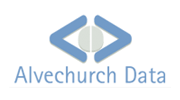Access Startup Options
Microsoft Access is delivered as a tool for users who need to create
or work with a database and so all the development features
and options are enabled by default. This complexity can be daunting to
some users but you can use the startup options to reduce the confusion so
that they can settle down and just use the database you've developed for
them.
Select
from the
menu to show the dialog:
![Dialog showing Startup Options for Microsoft Access [Access Startup Options dialog]](../media/images/accstartup.gif)
The settings on the startup dialog fall into two categories: some control
the appearance of the database; others control its behaviour and the
security.
Appearance
-
- the caption that will appear in the title bar in place of
"Microsoft Access".
-
- The icon that will appear on the title bar of the main window
and as a shortcut to the database on the desktop. Access XP has
an extra option
which will use the same icon on forms and reports throughout the
database.
-
- The form that will open when the database is loaded.
Behaviour
These check boxes allow you to show or hide different parts of the Access
user interface:
-
- leaves a simplified menu structure without the development
entries such as
.
It's usually best to clear this tick box to keep the user away
from the more powerful features.
-
- leave the user with the ability to right-click on a
form or report and use the short-cut menu. Options on this menu
like
can be useful or dangerous in different circustances depending on
the needs and abilities of the users.
-
- clear this tick box so that the user goes straight into
your startup form when the database opens. Note that the user will
still be able to reach the Database Window by selecting
from the
menu.
-
- clear this unless you are deliberately using the Status Bar for
messages to the user. The default messages from Access such as
are worthless to the majority of users.
-
- some toolbars include
or
buttons.
Clear this tick box to hide such features if the users will never
need to add or edit the forms.
-
- always clear this tick box. If this option is enabled then users will
be able to bypass your security by adding back in all the features you've
just hidden from them.
-
- clear this tick box. You do not want the user to ever see a VBA
code window.
-
- clear this tick box so that the user cannot press keys like
to view the Database Window.
Summary
The options in the screen shot above will leave the user with a database
which lets them do very little except use the forms which you've designed.
Any Access developer will know how to get around these restrictions but
these options form a good basis for distribution to casual users.
|

